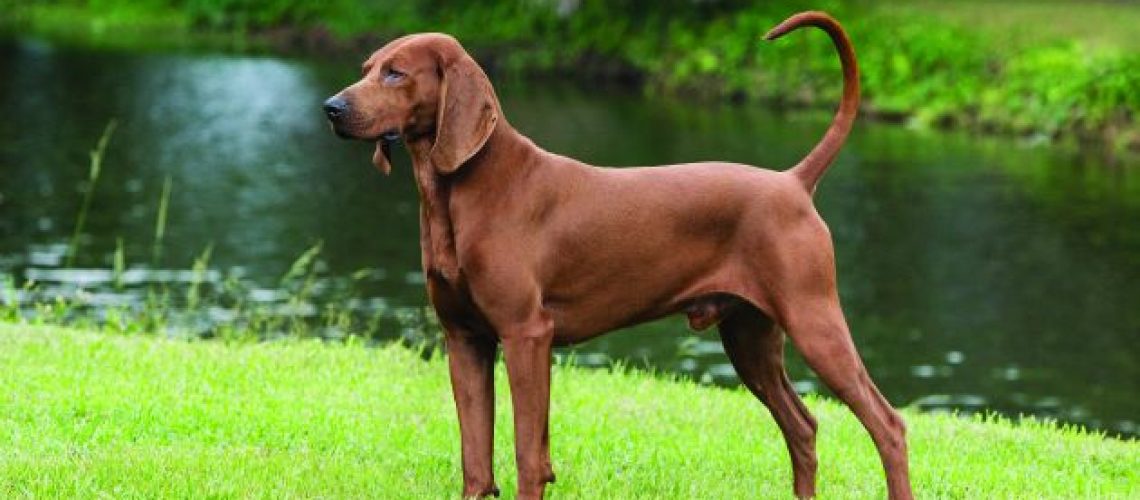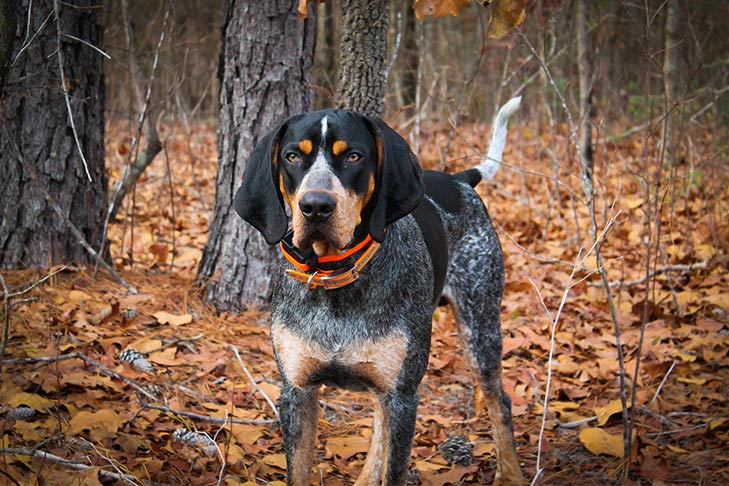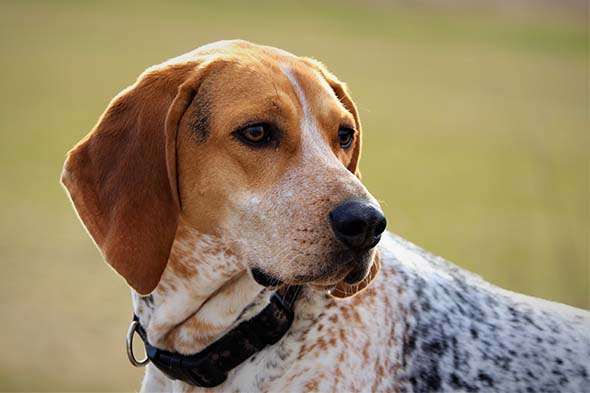Key Takeaways:
- Redbone Coonhounds are known for their strong hunting instincts and are often used for tracking and treeing raccoons.
- They are highly energetic and require regular exercise to prevent boredom and destructive behavior.
- Redbones have a distinctive red coat that is short and easy to maintain, requiring minimal grooming.
- They are intelligent and trainable, but can be stubborn at times, so consistent and patient training methods work best.
- Redbone Coonhounds are generally friendly and sociable with people and other dogs, making them good family pets if properly socialized from a young age.
Are you a dog lover looking for the perfect furry companion? Look no further! Delving into the world of Redbone Coonhounds will not only bring joy to your life but also provide you with countless benefits. Understanding the characteristics and care of this unique breed is essential to ensure a harmonious relationship between you and your new four-legged friend. So, let's embark on this exciting journey and discover why the Redbone Coonhound is the ideal addition to your family. Get ready to be captivated by their loyalty, intelligence, and boundless energy. Together, we will uncover all there is to know about these magnificent dogs. Get ready to fall in love with the Redbone Coonhound!
What is a Redbone Coonhound and what are its characteristics?
A Beautiful and Versatile Breed
The Redbone Coonhound is a beautiful and versatile breed of dog. With their striking red coat and muscular build, they are easily recognizable. These dogs were originally bred for hunting raccoons, but they have also become popular as family pets.
Redbone Coonhounds are known for their friendly and outgoing personalities. They are loyal and affectionate towards their owners, making them great companions. They are also intelligent and eager to please, which makes them relatively easy to train.
Characteristics of the Redbone Coonhound
The Redbone Coonhound has several distinctive characteristics that set it apart from other breeds:
- Size: They are medium to large-sized dogs, weighing between 45-70 pounds.
- Coat: Their coat is short and dense, which helps protect them during hunting expeditions.
- Voice: They have a deep, musical bark that can be heard from miles away.
- Energy Level: Redbones are active dogs that require regular exercise to keep them happy and healthy.
An Ideal Family Pet
If you're looking for a loving and loyal companion who will fit in well with your family, the Redbone Coonhound may be the perfect choice. With their friendly nature and playful personality, they get along well with children and other pets. However, due to their strong prey drive, it's important to socialize them properly from a young age.
While they do require regular exercise to burn off their energy, Redbones can adapt well to different living situations. Whether you live in a house with a large yard or an apartment, as long as they get enough exercise and mental stimulation, they can be happy in any environment.
Understanding the Redbone Coonhound's coat and its benefits
A Beautiful and Functional Coat
The Redbone Coonhound has a short, sleek coat that not only adds to their overall beauty but also serves important functional purposes. Their coat is dense and weather-resistant, which helps protect them during hunting trips in various terrains and climates.
Because of their dense coat, Redbones are well-suited for colder climates. The thick fur provides insulation against the cold, keeping them warm even in chilly temperatures. However, it's important to note that they can overheat easily in hot weather due to their dark-colored coats.
Grooming Needs
Despite their beautiful coats, Redbone Coonhounds have relatively low grooming needs. Their short hair doesn't require much maintenance compared to breeds with longer or thicker coats. Regular brushing with a soft-bristle brush will help keep their coat clean and free from loose hairs.
Bathing should be done as needed or when they get dirty from outdoor activities. It's important to use a dog-specific shampoo that won't strip away the natural oils from their skin. Additionally, regular ear cleaning is essential to prevent ear infections since droopy ears can trap moisture.
Benefits of a Short Coat
The short coat of the Redbone Coonhound offers several benefits:
- Less shedding: Compared to dogs with longer hair, Redbones shed less, which means less time spent cleaning up loose hairs around the house.
- Easier maintenance: With a short coat, grooming sessions are quicker and require less effort.
- Less matting: Since their fur is shorter, it's less prone to tangling or matting, making it easier to keep them looking neat and tidy.
Overall, the Redbone Coonhound's coat is not only visually appealing but also functional and easy to care for, making it a great choice for those who prefer low-maintenance grooming routines.
Caring for the health and well-being of a Redbone Coonhound
Regular Veterinary Check-ups
To ensure the health and well-being of your Redbone Coonhound, it is essential to schedule regular veterinary check-ups. These check-ups help detect any potential health issues early on, allowing for prompt treatment. During these visits, the veterinarian will perform a thorough examination, update vaccinations if necessary, and provide recommendations for preventive care.
Nutritious Diet
Feeding your Redbone Coonhound a nutritious diet is crucial for their overall health. A balanced diet consisting of high-quality dog food that meets their nutritional needs is recommended. It's important to follow the feeding guidelines provided by the manufacturer based on your dog's age, size, and activity level. Additionally, avoid overfeeding as obesity can lead to various health problems in Redbone Coonhounds.
Regular Exercise
Redbone Coonhounds are an active breed that requires regular exercise to maintain their physical and mental well-being. Engaging in activities such as daily walks, jogging, or playing fetch not only helps them burn off excess energy but also strengthens their muscles and keeps them fit. Providing ample opportunities for exercise will prevent boredom and destructive behavior.
The intelligence and friendliness of the Redbone Coonhound breed
Intelligent Problem Solvers
Redbone Coonhounds are known for their intelligence and problem-solving abilities. They have a keen sense of smell and are often used as hunting dogs. Their ability to track scents makes them excellent at finding lost objects or even missing persons. With proper training and mental stimulation, they can quickly learn new commands and tasks.
Social and Friendly Nature
The Redbone Coonhound breed is known for its friendly and sociable nature. They are generally good with children and other pets when properly socialized from a young age. Their friendly disposition makes them great family pets, always eager to please their owners. However, it's important to note that individual personalities may vary, so early socialization and positive reinforcement training are essential.
Exercise needs and fun activities for a Redbone Coonhound
High Energy Levels
Redbone Coonhounds have high energy levels and require regular exercise to keep them happy and healthy. Engaging in activities that provide both physical and mental stimulation is crucial. Long walks, jogging, hiking, or participating in dog sports such as agility or obedience training can help fulfill their exercise needs.
Fun Games
In addition to regular exercise, incorporating fun games into your Redbone Coonhound's routine can be highly beneficial. Playing interactive games like hide-and-seek or puzzle toys that require problem-solving can keep them mentally stimulated. These activities not only provide entertainment but also strengthen the bond between you and your furry friend.
Training tips and challenges for owning a Redbone Coonhound
Consistency is Key
When training a Redbone Coonhound, consistency is key. Establishing clear rules and boundaries from the beginning will help them understand what is expected of them. Use positive reinforcement techniques such as treats, praise, and rewards to motivate and encourage desired behaviors. Avoid harsh punishment as it may lead to fear or aggression.
Persistence with Recall Training
One common challenge with Redbone Coonhounds is recall training due to their strong hunting instincts. It's important to start recall training early on in a controlled environment using high-value treats as rewards. Gradually increase distractions while practicing recall commands until they reliably come back when called. Consistent practice and patience are crucial for success in recall training.
Grooming and maintaining the coat of a Redbone Coonhound: Tips and tricks
Regular Brushing
Redbone Coonhounds have a short, dense coat that requires minimal grooming. However, regular brushing helps remove loose hair and keeps their coat healthy. Using a soft-bristle brush or grooming mitt, gently brush their coat once or twice a week to prevent matting and distribute natural oils.
Nail Care
Regular nail care is essential for your Redbone Coonhound's comfort and overall well-being. Trim their nails every few weeks using a dog nail trimmer or grinder to prevent overgrowth. Be cautious not to cut into the quick, which can cause bleeding. If you're unsure about nail trimming, consult a professional groomer or veterinarian for guidance.
In conclusion, caring for the health and well-being of a Redbone Coonhound involves regular veterinary check-ups, providing a nutritious diet, and ensuring they get regular exercise. The intelligence and friendliness of this breed make them great companions, but they require consistent training with positive reinforcement techniques. Grooming their short coat involves regular brushing and nail care to keep them looking their best. By following these tips and tricks, you can provide the best care for your Redbone Coonhound.
In conclusion, the Redbone Coonhound is a friendly and energetic dog breed that requires regular exercise and mental stimulation. With proper care and training, this breed can make a loving and loyal companion for families who are active and willing to meet their needs.
What are the drawbacks of having a Redbone Coonhound?
Redbone Coonhounds are typically in good health and live for a long time, although a small number have been found to have hip dysplasia. Additionally, they might experience injuries while hunting in the field, and even raccoons can cause harm to them. Their droopy ears can make them susceptible to ear infections.
What is the personality of a Redbone Coonhound?
The Redbone Coonhound is a friendly and loyal breed known for its energetic nature. These dogs need regular exercise and mental stimulation. They are generally well-suited for households with children and other pets.
What are 5 facts about Redbone Coonhounds?
The Redbone Coonhound, also known as the official name Redbone Coonhound, has an average lifespan of 12 to 15 years and is known to be good with children, dogs, and families. It has a friendly, gentle, outgoing, and playful temperament, and is considered to be highly intelligent.
Do Redbone Coonhounds bark a lot?
Redbone Coonhounds are known for their excessive barking because they were specifically bred to track and tree animals, and their loud barking is intended to keep the animals up in the trees. Their barking, which is often characterized as baying or howling, makes them highly effective as watchdogs.
Can a coonhound be a house dog?
Despite being a rugged working dog, Black and Tan Coonhounds are surprisingly calm and relaxed when at home. They have a gentle and easygoing nature, and usually get along well with other pets and children.
Are Redbone Coonhounds good house dogs?
Redbones are highly adaptable and versatile dogs that excel in various activities, including coonhound trials and canine sports like agility. Above all, they make wonderful family pets, being loving and fiercely loyal.

















